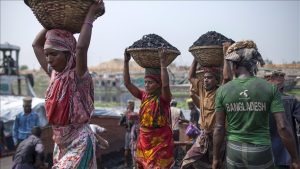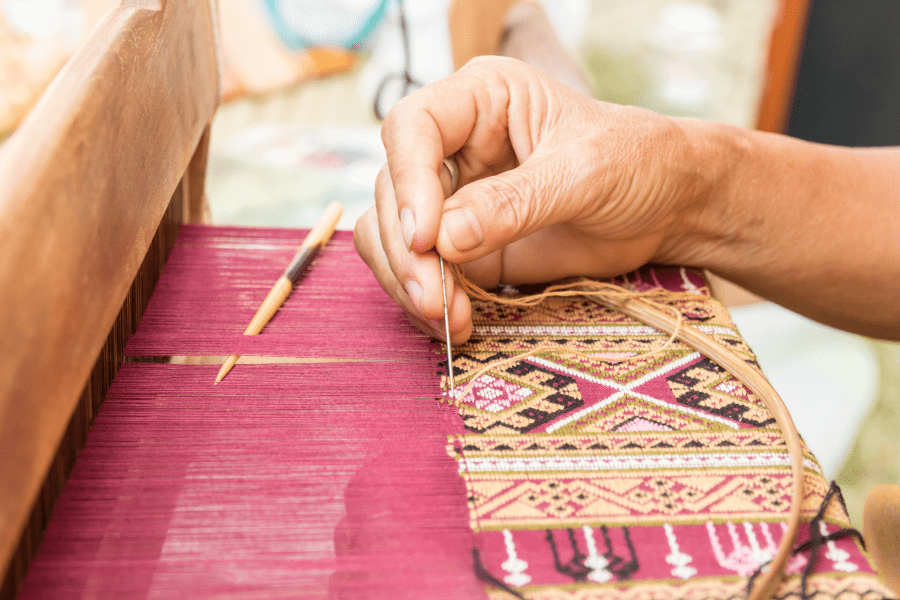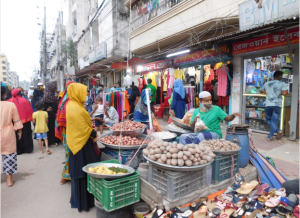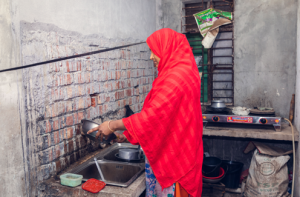
Informal Works
Lack of security in formal sector compelled street vendors to remain informal sector Street vendors are not in a position

Handloom shares 63% of the total fabric production in Bangladesh, meeting 40% of the local demand for fabrics.
The handloom sector provides direct employment to a million rural people, with 50% being female, and another half a million indirectly engaged.
like other informal sectors, the of Handloom workers are deprived of all facilities, Wages are never been met.
The sector annually adds more than 10 billion BDT to the national exchequer as value addition.
The handloom industry is the biggest handicraft industry in our country; it is the second-largest source of rural employment after agriculture. The traditional handloom industry is the largest non-farm economic activity in Bangladesh
since the long past that has created enormous employment opportunities for the rural poor, particularly for women. Manpower of about 1.5 million weavers, dyers, hand spinners, embroiderers, and allied artisans have been using their creative skills into more than 0.30 million active looms to produce around 620 million meters of fabrics annually. It shares 63% of the total fabric production in the country designed for home consumption, meeting 40% of the local demand for fabrics. Besides, it provides employment opportunities to a million rural people, 50% of which are female. Another half a million people have indirectly engaged in the industry. Handloom products include Placemats, Rugs or Blankets, Satranji, Crochet, Muslin, Tribal textiles, Silk fabrics, Sofa covers, Block Prints, Table cloth and Napkins, Towels, Dusters, Kitchen towels, Gents, Ladies and Baby Wear and Shirts, Punjabis, and other household linen in printed, plain or embroidered Khadi, etc.
It contributes more than 10 billion taka annually to the national exchequer as value addition. Bangladesh Handloom Board (BHB) was established in 1977 as a Statutory Public Sector Organisation under the administrative control of the Ministry of Textiles and Jute. The Board has been entrusted with the responsibility for the overall development of the handloom sector of the country and to make the welfare of the people engaged therein. Historically handloom has got its predominance and heritages in Bangladesh. The Bangladesh Handloom Board (BHB) recently develop National Handloom Policy in 2020 with a target to increase the productivity of this industry. But like other informal sectors, the workers of Handloom are deprived of all facilities and barely treated as workers. The National Labour Law and Wages are never been met for the workers. The health and safety issues are very much ignored by the sector. Handloom workers are very much unorganised and they do not have any idea about their rights and laws. Handloom is one of the most priority sectors of BLF since we are working in Textile and Garment for a long. BLF associated with Bangladesh Handloom Workers Union and lobbying with the government for ensuring workers’ right to a sustainable Handloom Industry in Bangladesh.

Lack of security in formal sector compelled street vendors to remain informal sector Street vendors are not in a position

Lack of security in formal sector compelled street vendors to remain informal sector Street vendors play a significant role to

Waste pickers significantly contribute to green economy but not recognized and victim of discrimination 120,000 waste pickers in Dhaka, recycled

Domestic children and women workers suffer silently in Bangladesh. Domestic workers are a highly vulnerable group in Bangladesh. High proportion
F Haque Tower, Level – 7
107, Bir Uttam C.R. Datta Road
Dhaka – 1205, Bangladesh.